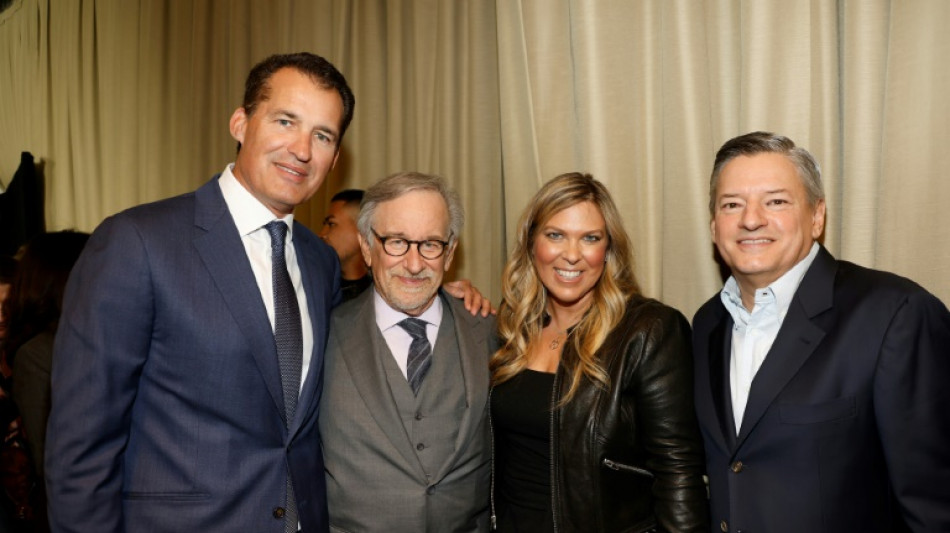
-
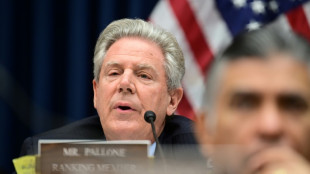 US lawmaker accuses Azerbaijan in near 'assault' at COP29
US lawmaker accuses Azerbaijan in near 'assault' at COP29
-
Tuchel's England have 'tools' to win World Cup, says Carsley

-
 Federer hails 'historic' Nadal ahead of imminent retirement
Federer hails 'historic' Nadal ahead of imminent retirement
-
Ukraine vows no surrender, Kremlin issues nuke threat on 1,000th day of war

-
 Novo Nordisk's obesity drug Wegovy goes on sale in China
Novo Nordisk's obesity drug Wegovy goes on sale in China
-
Spain royals to visit flood epicentre after chaotic trip: media

-
 French farmers step up protests against EU-Mercosur deal
French farmers step up protests against EU-Mercosur deal
-
Rose says Europe Ryder Cup stars play 'for the badge' not money

-
 Negotiators seek to break COP29 impasse after G20 'marching orders'
Negotiators seek to break COP29 impasse after G20 'marching orders'
-
Burst dike leaves Filipino farmers under water
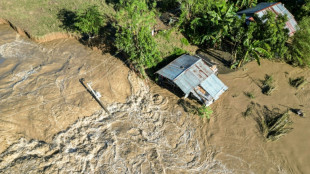
-
 Markets rally after US bounce as Nvidia comes into focus
Markets rally after US bounce as Nvidia comes into focus
-
Crisis-hit Thyssenkrupp books another hefty annual loss

-
 US envoy in Lebanon for talks on halting Israel-Hezbollah war
US envoy in Lebanon for talks on halting Israel-Hezbollah war
-
India to send 5,000 extra troops to quell Manipur unrest

-
 Sex, drugs and gritty reality on Prague's underworld tours
Sex, drugs and gritty reality on Prague's underworld tours
-
Farmers descend on London to overturn inheritance tax change

-
 Clippers upset Warriors, Lillard saves Bucks
Clippers upset Warriors, Lillard saves Bucks
-
Acquitted 'Hong Kong 47' defendant sees freedom as responsibility

-
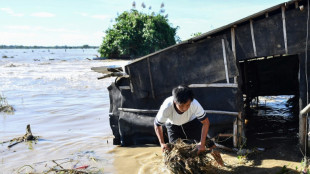 Floods strike thousands of houses in northern Philippines
Floods strike thousands of houses in northern Philippines
-
Illegal farm fires fuel Indian capital's smog misery

-
 SpaceX set for Starship's next flight, Trump expected to attend
SpaceX set for Starship's next flight, Trump expected to attend
-
Texans cruise as Cowboys crisis deepens

-
 Do the Donald! Trump dance takes US sport by storm
Do the Donald! Trump dance takes US sport by storm
-
Home hero Cameron Smith desperate for first win of 2024 at Australian PGA

-
 Team Trump assails Biden decision on missiles for Ukraine
Team Trump assails Biden decision on missiles for Ukraine
-
Hong Kong court jails 45 democracy campaigners on subversion charges

-
 Several children injured in car crash at central China school
Several children injured in car crash at central China school
-
Urban mosquito sparks malaria surge in East Africa

-
 Djibouti experiments with GM mosquito against malaria
Djibouti experiments with GM mosquito against malaria
-
Pulisic at the double as USA cruise past Jamaica

-
 Many children injured after car crashes at central China school: state media
Many children injured after car crashes at central China school: state media
-
Asian markets rally after US bounce as Nvidia comes into focus

-
 Tens of thousands march in New Zealand Maori rights protest
Tens of thousands march in New Zealand Maori rights protest
-
Five takeaways from the G20 summit in Rio

-
 China, Russia ministers discuss Korea tensions at G20: state media
China, Russia ministers discuss Korea tensions at G20: state media
-
Kohli form, opening woes dog India ahead of Australia Test series

-
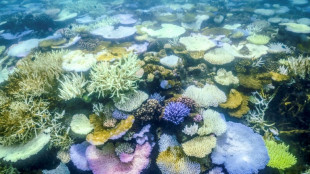 Parts of Great Barrier Reef suffer highest coral mortality on record
Parts of Great Barrier Reef suffer highest coral mortality on record
-
Defiant Lebanese harvest olives in the shadow of war

-
 Russian delegations visit Pyongyang as Ukraine war deepens ties
Russian delegations visit Pyongyang as Ukraine war deepens ties
-
S.Africa offers a lesson on how not to shut down a coal plant

-
 Italy beat Swiatek's Poland to reach BJK Cup final
Italy beat Swiatek's Poland to reach BJK Cup final
-
Japan, UK to hold regular economic security talks

-
 Divided G20 fails to agree on climate, Ukraine
Divided G20 fails to agree on climate, Ukraine
-
Can the Trump-Musk 'bromance' last?

-
 US to call for Google to sell Chrome browser: report
US to call for Google to sell Chrome browser: report
-
Macron hails 'good' US decision on Ukraine missiles

-
 Italy eliminate Swiatek's Poland to reach BJK Cup final
Italy eliminate Swiatek's Poland to reach BJK Cup final
-
Trump expected to attend next Starship rocket launch: reports

-
 Israeli strike on Beirut kills 5 as deadly rocket fire hits Israel
Israeli strike on Beirut kills 5 as deadly rocket fire hits Israel
-
Gvardiol steals in to ensure Croatia reach Nations League quarter-finals


Netflix and Spielberg combine for nature doc 'Life on Our Planet'
"Life on Our Planet," the new natural history series from Netflix and Steven Spielberg, sets out to tell the entire, dramatic story of life on Earth in a serialized, "binge watch" format.
Streaming globally from Wednesday, the show's eight episodes transport viewers through Earth's five previous mass extinction events, each recreated with computer-generated visual effects.
As Morgan Freeman's narration reminds us, life has always found a way to endure every catastrophic event thrown at it over four billion years, from brutal ice ages to meteorites.
Each time, species that survive the destruction do battle for the next era's dominance in a "Game of Thrones"-style fight -- only between vertebrates and invertebrates, or reptiles and mammals, instead of Starks and Lannisters.
"What we wanted to do, our intention at the very beginning, was to serialize the story of life. Make it a kind of binge watch. Because the story is so dramatic," said showrunner Dan Tapster.
"I think, and I hope, that is something that we've achieved, which is possibly a world-first in the natural history space."
Aside from a series of cliffhanger finales, "Life on Our Planet" finds dramatic tension with a series of ordinary, loveable underdogs who "win" evolution against the odds -- at least for a few hundred million years.
The influence of executive producer Spielberg's company, Amblin Television, encouraged a series with "a lot more emotion" and "pathos" than other natural history programs, said Tapster.
The show picks out key species, such as the first fish with a backbone, or the first vertebrate to migrate from ocean to land.
With 99 percent of all the species that ever lived now extinct, filmmakers had no shortage to choose between.
"There's about at least a billion species that are no longer with us, and we had to narrow that down to 65," said Tapster.
But those selected are often unlikely heroes -- plucky survivors, such as the odd-looking Arandaspis fish, which take their chance to shine as larger ocean beasts falter, and reshape the future of life.
Arandaspis "is a bit rubbish, it's weird... But it's in (the show), because it has a really crucial role" in evolution, said visual effects supervisor Jonathan Privett.
"One of the things I really love about that scene also is that Arandaspis has just got a hint of 'ET' about him," added Tapster.
- 'Authentic' -
The series employs visual effects from Industrial Light & Magic, the company established by "Star Wars" creator George Lucas, which pioneered the groundbreaking 3D dinosaurs for Spielberg's "Jurassic Park" three decades ago.
Monsters of the ancient past, from dinosaurs to the far earlier, sea-dwelling Cameroceras with their giant 25-foot (8-meter) shells, are rendered over the top of real backgrounds shot by the filmmakers.
To do this, producers had to scour the planet for contemporary landscapes that most closely resemble the habitats of creatures up to 450 million years ago.
"The animals really sit in a real world. I think it's seamless, and I think it's a very authentic way of taking us back into that time," said producer Keith Scholey.
Filmmakers also had to use visual effects tools to painstakingly remove pesky modern newcomer species, like fish, mammals -- and even grass.
"Grass was the bane of our lives," recalls Tapster.
Grass "only really took over the world about 30 million years ago... that, for us, meant we had to do a lot of gardening."
- 'Dominant species' -
The show enters a crowded marketplace, going up against David Attenborough's latest BBC series "Planet Earth III," which also launched this week.
It follows Apple TV+'s "Prehistoric Planet," also narrated by Attenborough, which uses computer-generated effects to recreate the age of dinosaurs.
But "Life on Our Planet" also aims to stand out from the competition due to the timely message embedded within its narrative.
Despite the show's interest in cliffhangers and plot twists, it is not much of a spoiler to say that it ends with life surviving, and humans on top.
Yet with a sixth mass extinction event already under way due to humankind's impact on Earth, there is a deeply sobering warning too.
"The five events we've had so far, there has been one common denominator -- and that is, the dominant species as you go into that extinction never came out," says series producer Alastair Fothergill.
"We are creating the sixth one, and I think you probably think we are the dominant species at the moment ..."
Tapster added: "In a strange way, there is a message of hope within that.
"Because not only is this the first extinction event that is being caused by a species, but we also have the ability to stop it."
T.Wright--AT



